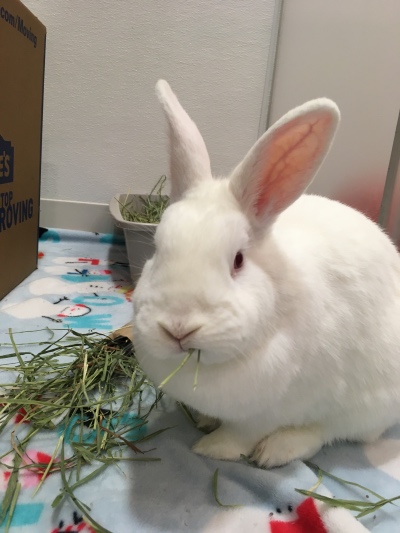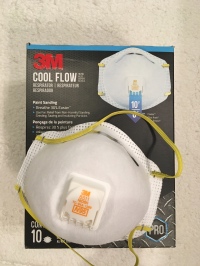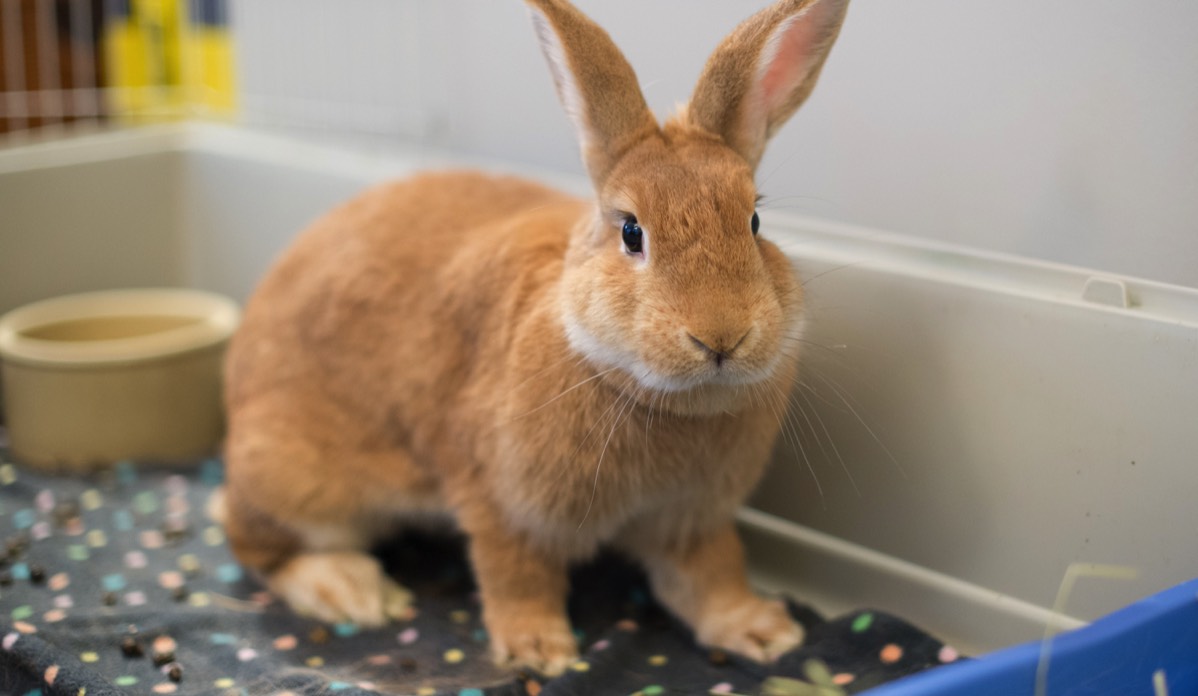
Allergies Explained: A Guide for People Living With House Rabbits
Wednesday, August 14, 2019
by Dori Germolec
 What are allergies?
What are allergies?
Allergy can be defined as the presence of specific antibodies that react to proteins, triggering a cascade of events in the immune system that are responsible for the symptoms people may experience. Pet allergy is a reaction to proteins found in an animal's skin cells, saliva or urine. Signs of pet allergy may be similar to those common to hay fever, such as sneezing and runny nose, as well as itching, redness, eye irritation, or hives. Some people may also experience signs of asthma, such as wheezing and difficulty breathing.
Who gets allergies?
There are many factors important in determining whether an individual will develop allergic sensitization to furry animals. These can include family history of allergy, the setting in which exposure occurs, the age of the individual, the intensity of the exposure, and the presence of other allergens. All of these things can contribute to how responsive an individual’s immune system may be when it sees an allergen.
What are allergens?
In the 1970s, the main allergen in cats (Fel d1), was the first animal hair allergen to be identified. This allergen like most ‘animal hair allergens’ is not part of the animal’s hair in the strict sense. It is produced in the animal’s glands, and whenever the animal cleans itself, the allergen is spread onto its fur. It is often the small skin particles/dander or substances found in bodily fluids that trigger allergies in humans. The trigger substances are needed for the animals to function; some are required for their sense of smell, others for the immune system and social behavior. These allergens are carried throughout a home on shed fur, bedding or house dust.
What about Rabbit Allergens?
Rabbits have become common domestic pets (ranking 3rd behind cats and dogs in the US and UK), but allergic asthma and/or rhinitis (runny nose) attributable to house rabbits has not been widely studied. There are a number of papers in the scientific literature that report allergy resulting from having rabbits at home. Several allergens have been identified from rabbits, such as the proteins Ory c 1 (Ag R1), Ory c 3 (which is similar to the major cat allergen Fel d 1), and Ory c 4 (which may be cross reactive with some cat and dog allergens). These are found in the rabbit’s saliva and get transferred to their fur when they groom themselves. Serum albumin is also a recognized allergen, and although it does not appear to be a major factor in rabbit allergy, it is notable because it is an important allergen in other species such as cat, dog and horse. In scientific papers that have examined cross-reactivity between species, it appears that the cross-reactivity between cat and dog allergens and rabbit allergens is very low. This means that even if you are allergic to other types of furry pets, you may not be allergic to rabbits. And I can say from personal experience, as I have a severe cat allergy, that this can truly be the case. However, there are also a number of reports that suggest that individuals with cat and dog allergy have a significantly higher risk of developing allergy to other furry animals.
What about Hay?
One thing that may be an issue in having a rabbit as a pet is allergic contact dermatitis or rhinitis caused by contact with plants (i.e. hay fever).Hay makes up 70-80% of the rabbit’s daily diet and different types of hay may cause allergic reactions in sensitive people. Some people report that changing the brand of hay that they feed their bunnies may help with hay fever.
 What are Some Ideas for Allergy Relief?
What are Some Ideas for Allergy Relief?
Recommendations for reducing contact with animal allergens adapted from the American Academy of Allergy Asthma and Immunology and the Asthma and Allergy Foundation of America:
- Try not to hug and kiss pets if you are allergic to them, and avoid close contact with your face.
- Keeping pets out of your bedroom can reduce allergy symptoms since you spend about eight hours every day in this room. Keeping your pet off of upholstered furniture is also helpful as the upholstery traps dander and dust.
- Have someone who doesn't have allergies brush the pet regularly.
- Use a double or micro-filter bag in the vacuum to reduce the amount of pet allergen present in carpeting that leaks back into the room air.
- Use HEPA air cleaners, which can be a big help in removing unwanted allergenic particles from the air.
- Remove carpeting and rugs, which can trap pet dander and other allergens.
- Use bedding the reduces the amount of dust generated, clean and change bedding more frequently to reduce the accumulation of allergens
 Have someone who is not sensitive clean cages and fill hayracks.If practical, were a disposable dust mask (available at most hardware stores) in order to minimize inhalation of pet dander when changing the litterbox. If you experience skin symptoms, wear reusable gloves.
Have someone who is not sensitive clean cages and fill hayracks.If practical, were a disposable dust mask (available at most hardware stores) in order to minimize inhalation of pet dander when changing the litterbox. If you experience skin symptoms, wear reusable gloves.
There is very limited evidence that immunotherapy (i.e. allergy shots), for dog allergens may reduce sensitization to other furry animals.
Where to go for more information:
- One Health Organization – Allergic to your rabbit, rat or mouse fact sheet: https://onehealth.org/free-animal-allergies-fact-sheets/osucvmvphallergic-to-your-rodent/
- American College of Allergy, Asthma & Immunology: https://acaai.org/resources/tools/home-allergy-management
- American Academy of Allergy, Asthma and Immunology: https://www.aaaai.org/conditions-and-treatments/allergies/Pet-Allergy


 What are allergies?
What are allergies? What are Some Ideas for Allergy Relief?
What are Some Ideas for Allergy Relief? Have someone who is not sensitive clean cages and fill hayracks.If practical, were a disposable dust mask (available at most hardware stores) in order to minimize inhalation of pet dander when changing the litterbox. If you experience skin symptoms, wear reusable gloves.
Have someone who is not sensitive clean cages and fill hayracks.If practical, were a disposable dust mask (available at most hardware stores) in order to minimize inhalation of pet dander when changing the litterbox. If you experience skin symptoms, wear reusable gloves.